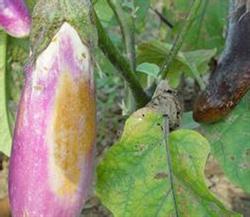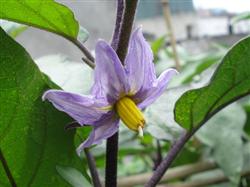Two high-yield techniques for planting eggplant in autumn

First, the old man changes the new method. Make use of spring eggplant to cultivate and rejuvenate, make it rejuvenate, blossom and bear fruit. The specific method is that in early August, when spring eggplant changes from prosperity to decline and there are few leaves, vegetables and flowers, when the soil is moist before or after rain, dung, water and nitrogen fertilizer is applied first, and after three or two days, all the branches and leaves are cut off, leaving only the main branch as the sprouting mother branch of the new leaf. In about a week or so, the mother branch will sprout new branches and grow rapidly. On this basis, comb away weak twigs and over-dense branches, pay attention to pest control and disease control, fertilize and resist drought, the new branches will blossom and bear fruit quickly, and the time for hanging fruit can be up to two months. Second, the method of raising seedlings and planting in autumn. Choose varieties with high disease resistance, and choose soils with high topography, no stagnant water and loose vegetables, especially in hilly areas where eggplant vegetables have not been planted. When sowing, the rain is covered with film and the sun is covered with a sunshade net. It can be transplanted in more than 20 days. When transplanting, it is better to be in cloudy or light rainy days. If it is a sunny day, it is appropriate in the evening, and pour the root water. Pay attention to soil preparation, as far as possible deep ditch high box, can discharge energy irrigation, and one-time application of sufficient base fertilizer, after survival, the management is similar to spring eggplant, but should pay attention to disease control and drought resistance. As autumn Kandelia Candel coincides with the high temperature season, its growth rate is generally faster than that of spring Kandelia Candel, and its flowering and fruiting time can also be delayed to late autumn to early winter.
- Prev

How to prevent and cure eggplant cotton blight
Eggplant cotton blight disease, commonly known as rotten fruit and water rot, is one of the important diseases of eggplant, which is common in various places. Eggplant can be harmed at all growth stages. The general loss is 20-30%, and in severe cases, more than 50%. The peak period of the disease is also the peak period of the disease, and disasters often break out in rainy areas and years, resulting in devastating losses. First, disease identification.
- Next

Key points of management techniques for cross pollination of eggplant
The optimum temperature for eggplant flowering and fruiting is 25: 30 ℃, below 17 ℃, above 40 ℃, and can not be fertilized. The flower blossoms at about 6 o'clock in the morning, and the anther begins to crack after 7 o'clock, so the suitable pollination time every day is after 8 hours. Cross pollination should choose the Corolla to protrude the bud one day before the female flower blossoms.
Related
- Where is it suitable to grow horseradish in China? it is expected to see the middle altitude horseradish in Alishan.
- How to prevent tomato virus disease reasonably? (Control methods included)
- Many people like to plant towel gourd on the balcony. What are the main points of this method and management?
- What crops can chili peppers be mixed with?
- Fertilization techniques and matters needing attention in Tomato
- What are the grafting techniques for peach seedlings in spring?
- Harm and control methods of root swelling disease of Chinese cabbage
- What are the pests of sweet potatoes? How to prevent and cure it?
- Symptoms, causes and Control methods of navel Rot in Tomato
- The cause of "Cucumber rotten bibcock" in Farmers' planting Cucumber and its Control Plan

